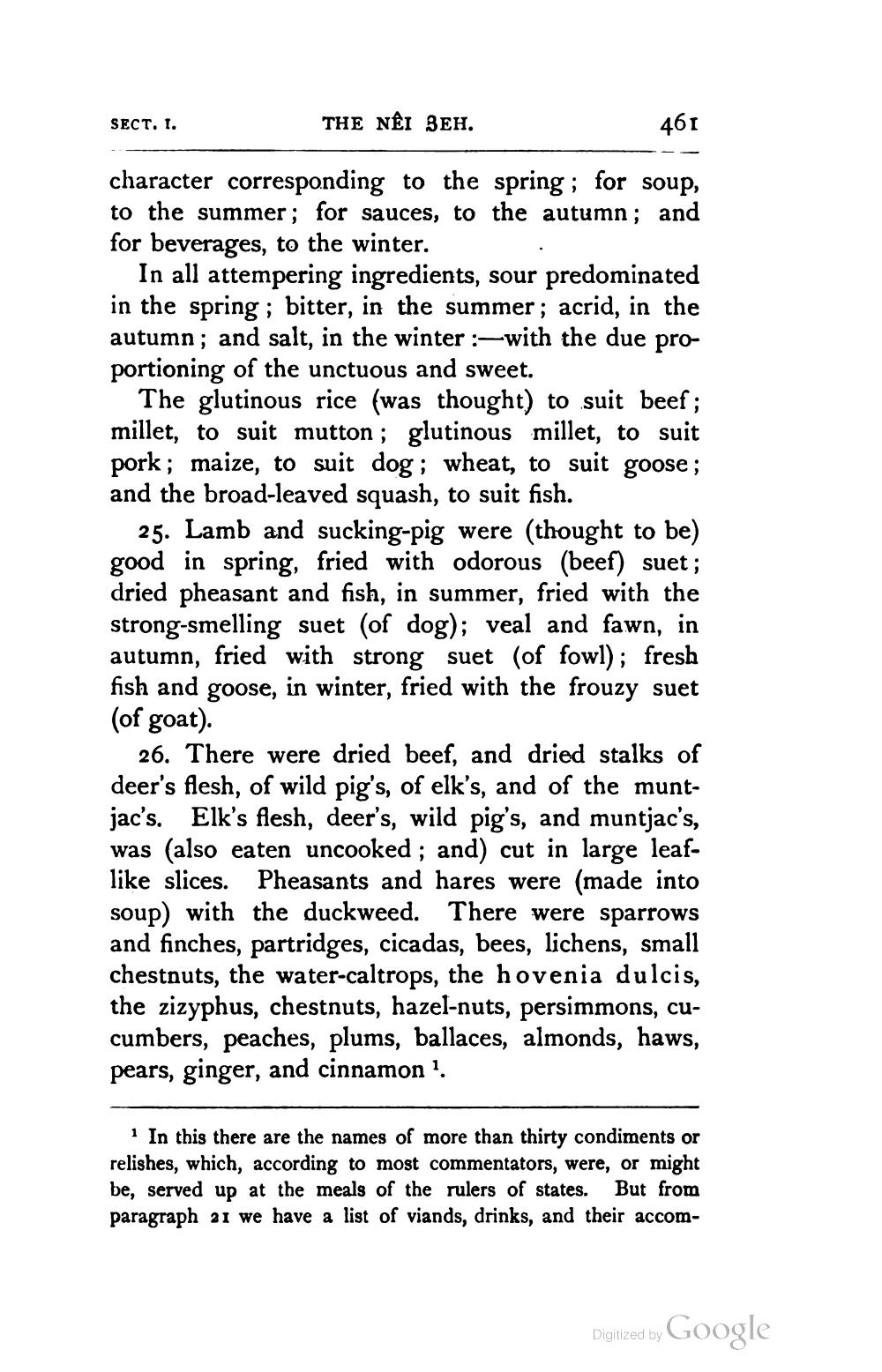________________
Sect. 1.
THE NÊI SEH.
461
character corresponding to the spring; for soup, to the summer; for sauces, to the autumn; and for beverages, to the winter.
In all attempering ingredients, sour predominated in the spring ; bitter, in the summer; acrid, in the autumn; and salt, in the winter :-with the due proportioning of the unctuous and sweet.
The glutinous rice (was thought) to suit beef; millet, to suit mutton; glutinous millet, to suit pork; maize, to suit dog; wheat, to suit goose; and the broad-leaved squash, to suit fish.
25. Lamb and sucking-pig were (thought to be) good in spring, fried with odorous (beef) suet ; dried pheasant and fish, in summer, fried with the strong-smelling suet (of dog); veal and fawn, in autumn, fried with strong suet (of fowl); fresh fish and goose, in winter, fried with the frouzy suet
(of goat).
26. There were dried beef, and dried stalks of deer's flesh, of wild pig's, of elk's, and of the muntjac's. Elk's flesh, deer's, wild pig's, and muntjac's, was (also eaten uncooked ; and) cut in large leaflike slices. Pheasants and hares were (made into soup) with the duckweed. There were sparrows and finches, partridges, cicadas, bees, lichens, small chestnuts, the water-caltrops, the hovenia dulcis, the zizyphus, chestnuts, hazel-nuts, persimmons, cucumbers, peaches, plums, ballaces, almonds, haws, pears, ginger, and cinnamon '.
* In this there are the names of more than thirty condiments or relishes, which, according to most commentators, were, or might be, served up at the meals of the rulers of states. But from paragraph 21 we have a list of viands, drinks, and their accom
Digitized by Google




